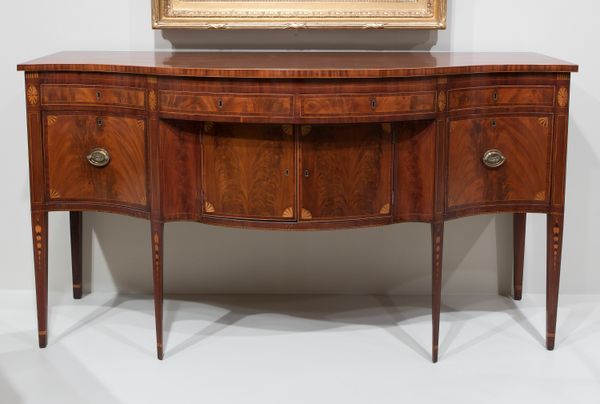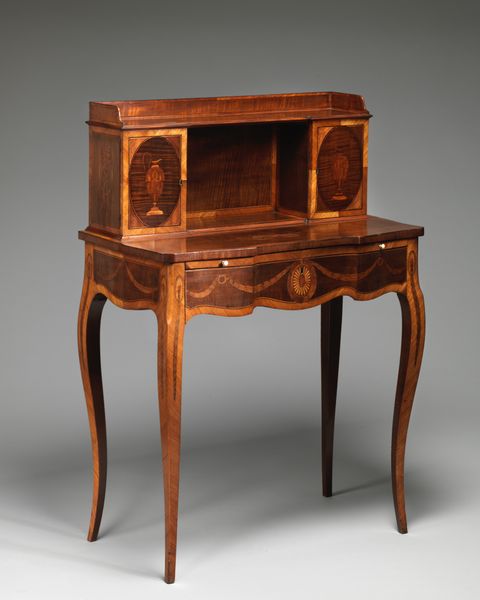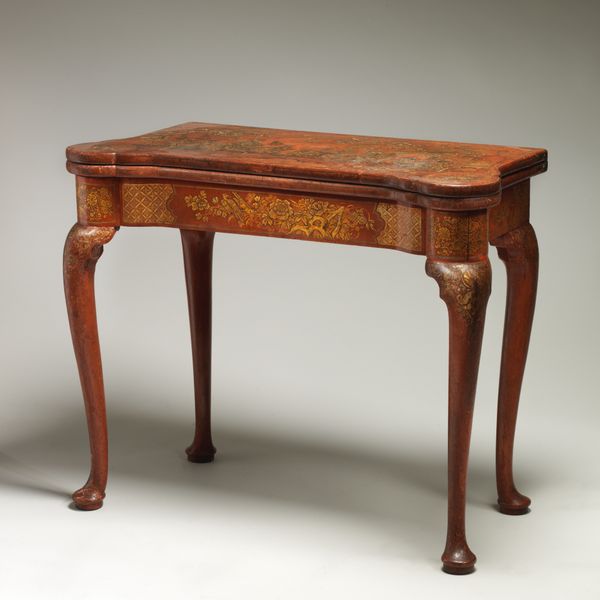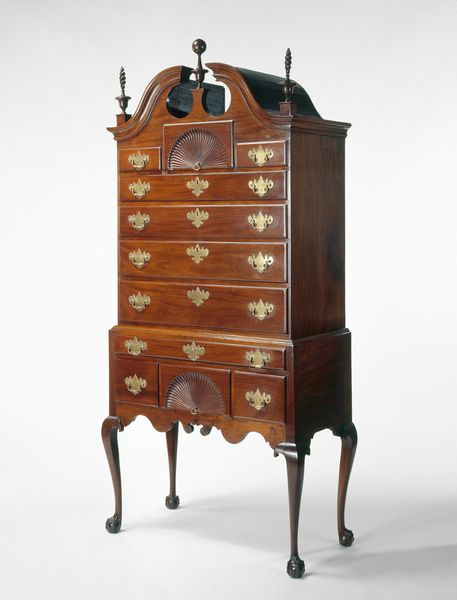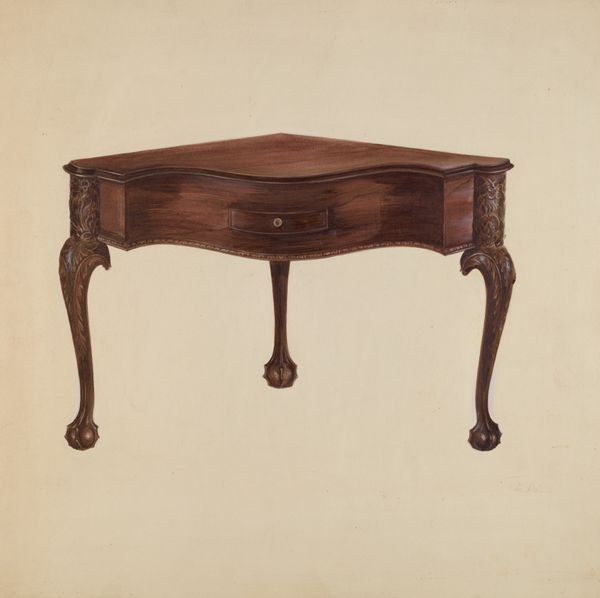
wood
#
interior architecture
#
neoclacissism
#
wood texture
#
furniture
#
landscape
#
wooden texture
#
wood
#
decorative-art
Dimensions: 124.5 × 186.4 × 59.7 cm (49 × 73 3/8 × 23 3/4 in.)
Copyright: Public Domain
Curator: What a wonderfully imposing piece of furniture. This is a sideboard, created anonymously, sometime between 1825 and 1835. It's currently held here at the Art Institute of Chicago. Editor: My immediate impression is one of formality. The symmetry is almost austere, yet the wood grain has this incredible swirling texture that prevents it from feeling cold. Curator: Precisely! The piece reflects the Neoclassical style which was pervasive during this period. Furniture like this was about signaling status. Its presence in a dining room signified wealth and a certain cultivated taste. The choice of wood, likely mahogany, also speaks volumes. Editor: The dark wood creates this sense of groundedness, especially at the base with those chunky, ornate feet. And then your eye is drawn upward by the triangles inlaid on either side. It's a fascinating use of geometric forms. Curator: These forms are derived from classical architectural details. Think of the columns and pediments of Greek temples, translated into domestic furnishings. It's about connecting oneself to a lineage of power and civilization, even within the home. These pieces often stood in specific rooms as well, as that had sociopolitical implications. Editor: I see that tension now, between the handcrafted nature of the woodwork—look at that roped edge detail along the central cabinet—and this grand, almost manufactured impression it gives. It's trying to have it both ways, isn’t it? Luxurious and a product of the American classical vision. Curator: Very much so. To own a sideboard like this meant participating in a visual language of social hierarchy, expressing power and aspiration through decorative art. Owning such pieces signified a lot to people who were on the rise at the time. Editor: Considering its cultural context really unlocks another layer of understanding. It is quite remarkable how functional pieces such as this tell larger stories, doesn't it? I now see the blend of textures and patterns not merely as decorative, but as intentional strategies of conveying the image one wanted others to perceive them. Curator: Indeed. Each carefully chosen element reveals a fascinating tableau of early American society. Editor: The composition truly is so balanced; and now that I understand its meaning, it's rather intriguing.
Comments
No comments
Be the first to comment and join the conversation on the ultimate creative platform.
